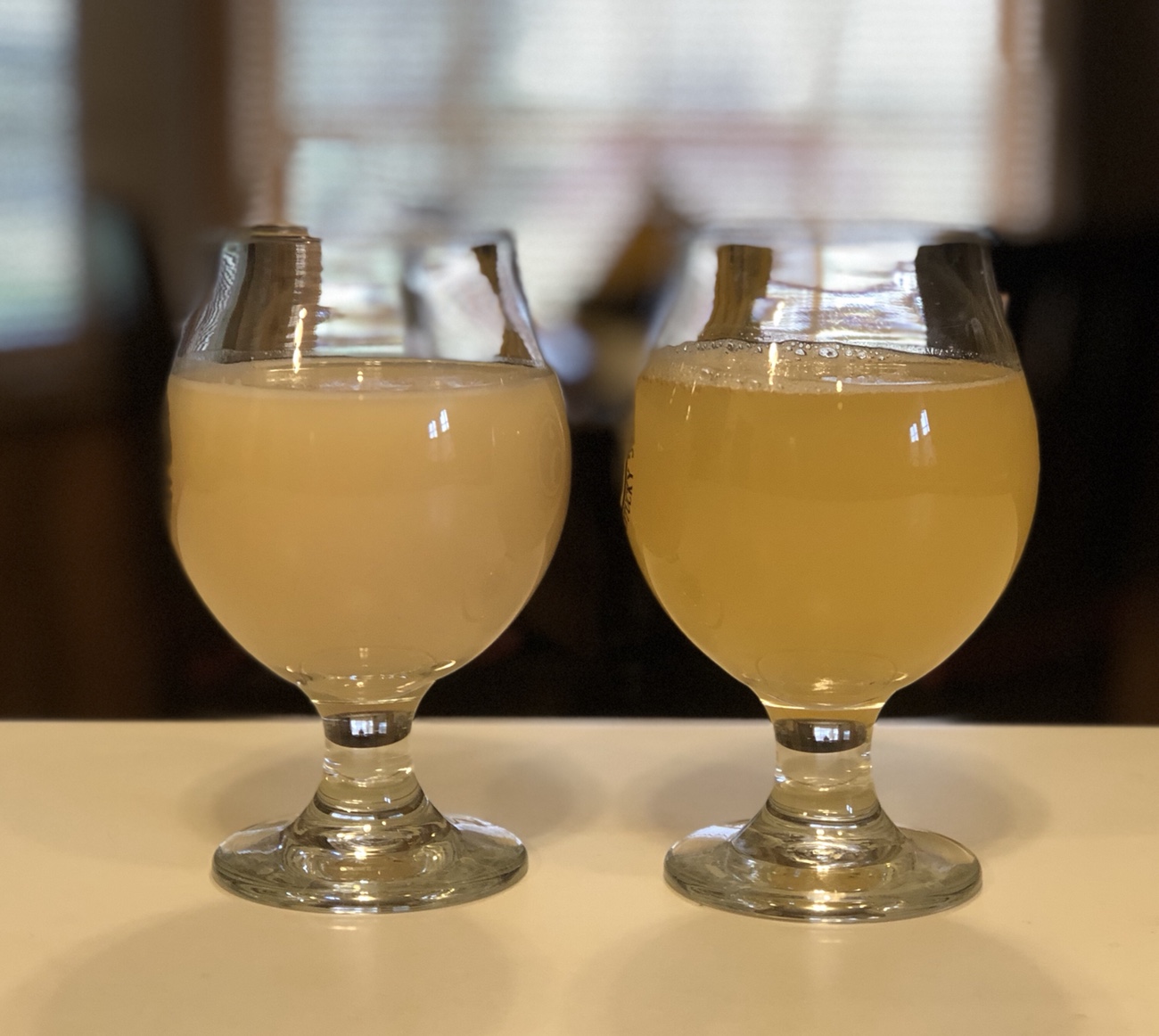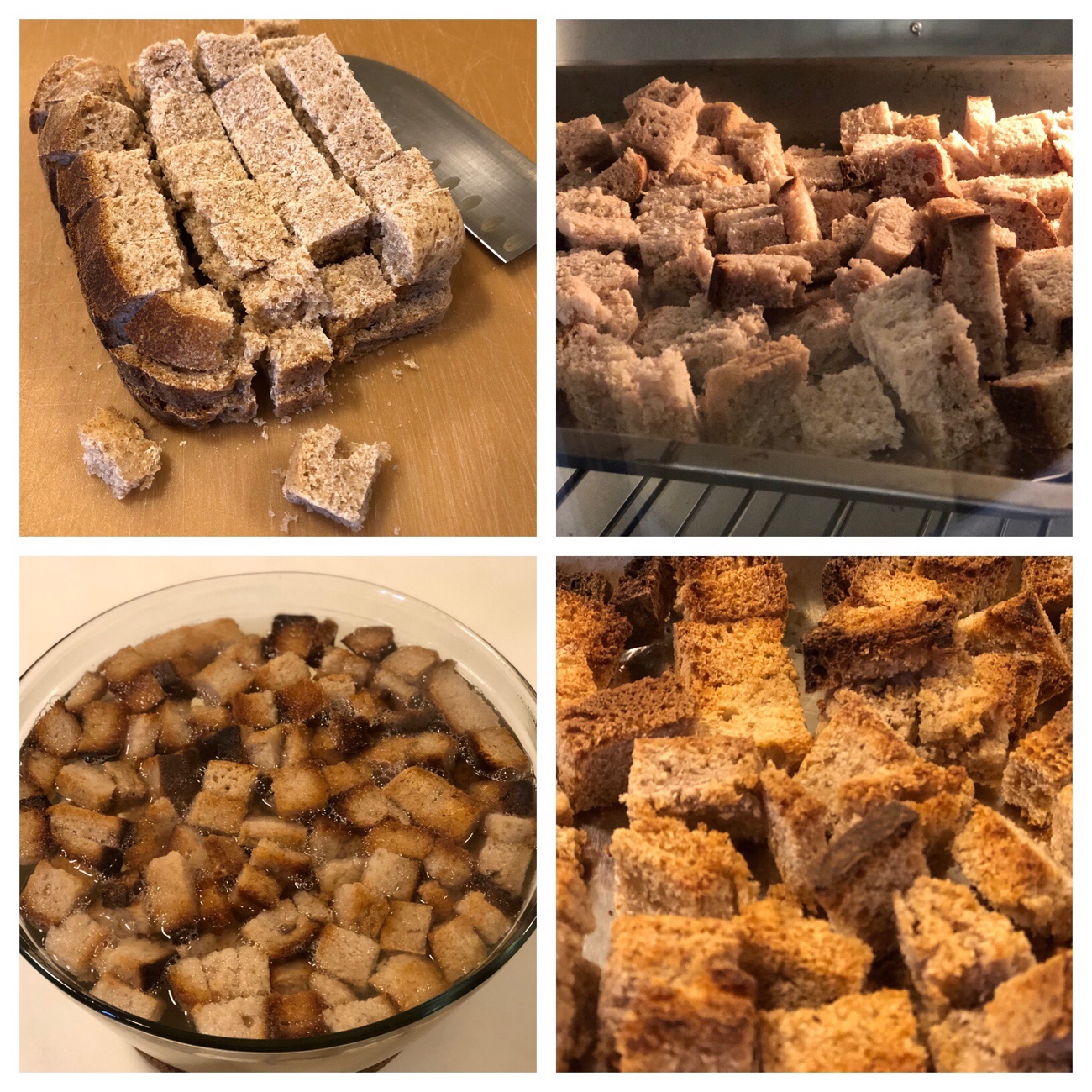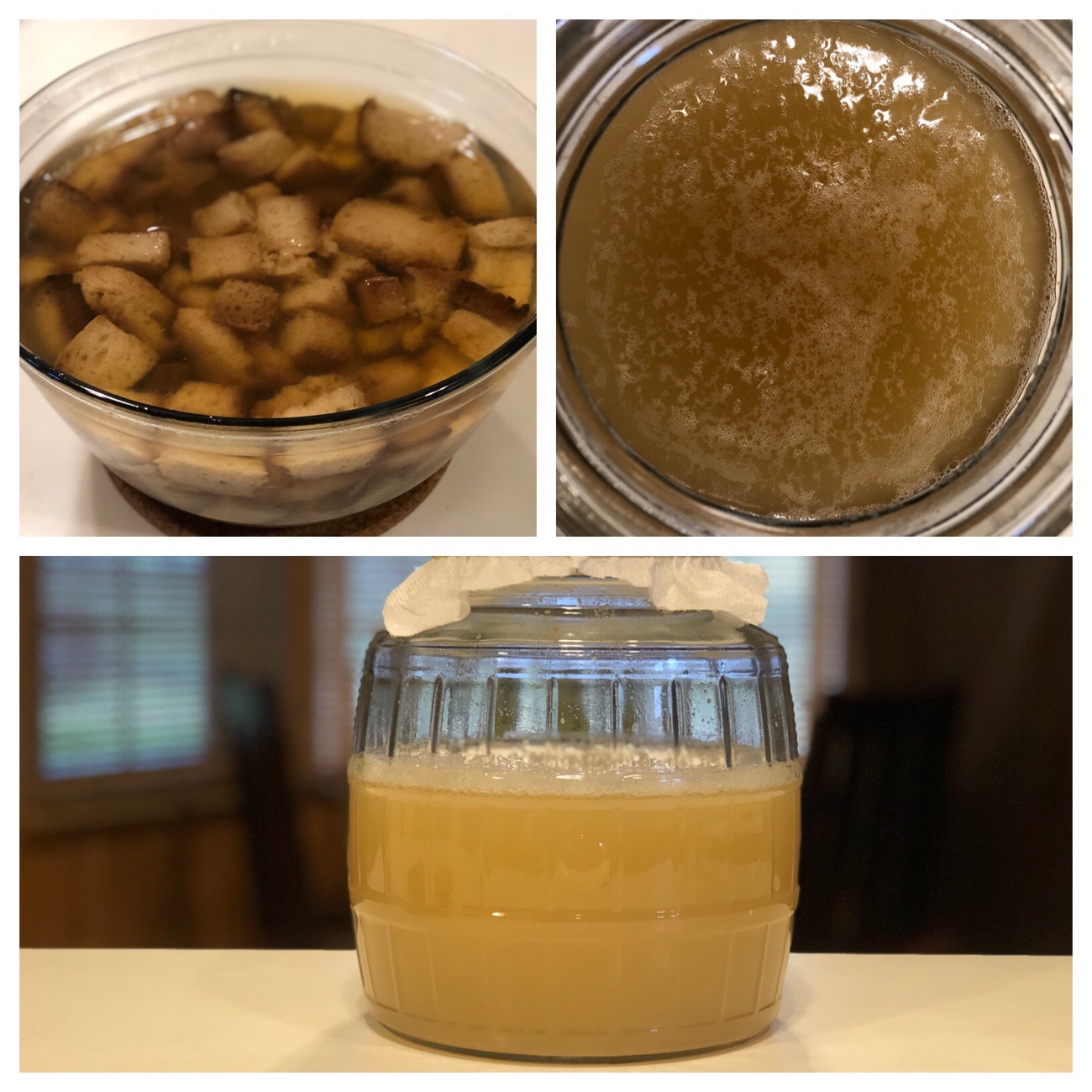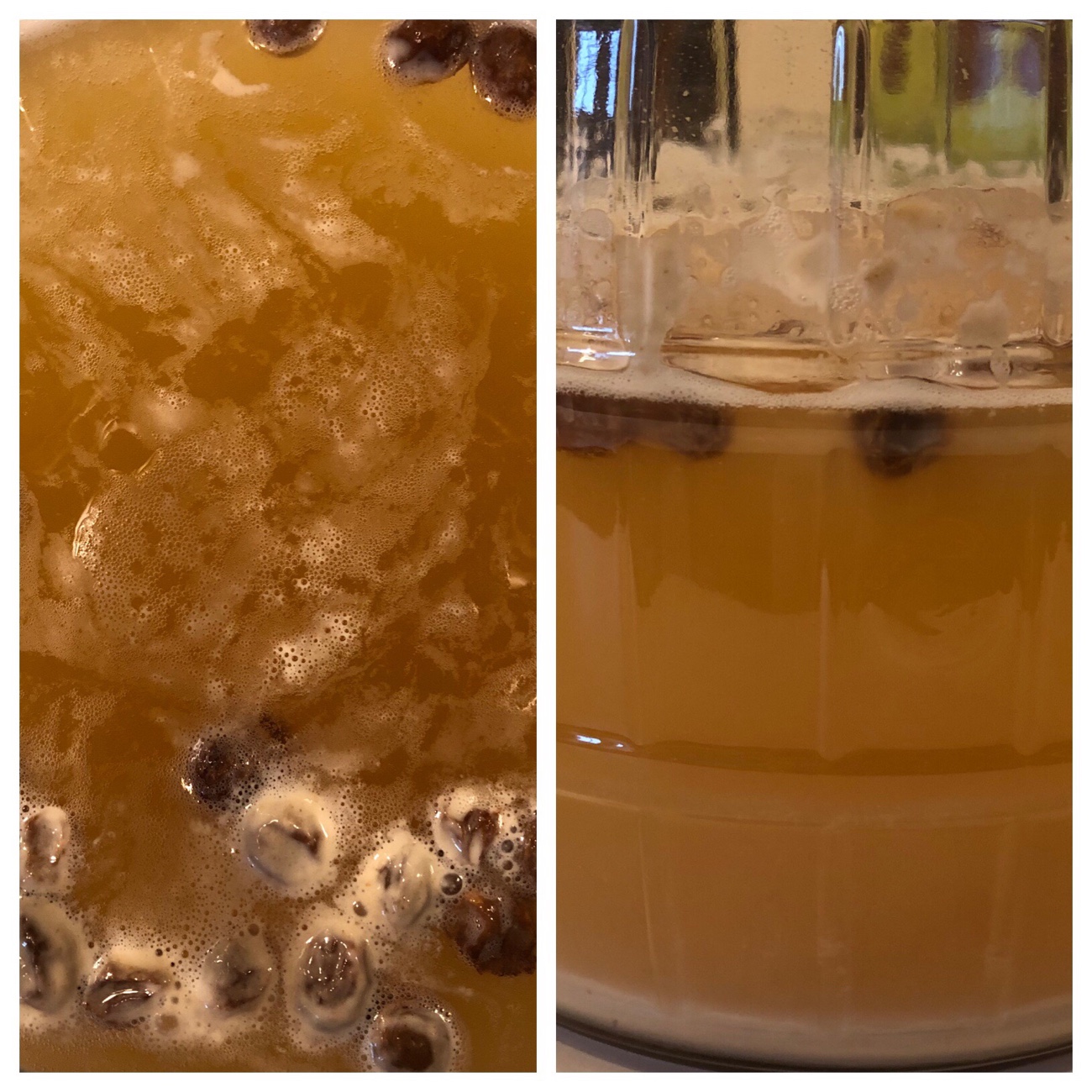
I’ve previously posted about making the wonderful fermented tonic beet kvass, and continue to make it regularly. Some time ago, while researching different types of “kvass”, I discovered that the origin of the drink is an Eastern European ferment that uses bread – specifically, rye bread – as starter for the ferment. It just so happened that there was some “extra” sourdough rye sitting around, so I started some traditional bread-based kvas.
NPR has an informative article about Russian kvas. I found it particularly interesting that fermentation “lowers…pH enough to kill bad bacteria — which means that drinking kvas can be safer than drinking questionable water” – this is similar to some historians’ thoughts about how beer developed (before people knew to boil water to disinfect it).
Craft brewers have also apparently been inspired by kvas, brewing session beers from pretzels and spiced rye loaves, in addition to traditional rye and bread/grain combinations. They’re also adding flavors from beet, lavender, mint, maple syrup, and caraway seeds.
Before getting too creative with the kvas, I figured I should try making it using a “traditional” recipe, as a baseline. Ironically, I bookmarked no fewer than four recipes, so I picked the first one for this round.
The process starts by cutting the bread into cubes, which I then toasted until they turned a nice dark brown. Then, I boiled water and added the toasted bread. It rested overnight.

The next day, I strained the mixture through a sieve (saving the soggy spent bread for the fowl) in a gallon glass jar. After activating the baking yeast, I added it to the glass jar along with the sugar and the raisins and set it on a shelf to work its magic for several days.

After 4 days, I strained the kvas into a plastic bottle and placed it in the fridge. Without the yeasty sediment, it looked and tasted a bit like a low-ABV beer, with gentle rye notes. Adding some of the yeast back in (for the nutrients) resulted in a cloudy, richer brew with stronger grain flavor. Though both were tasty, I think I preferred the yeastier version.

Kvas is easy-drinking, easy to make, and full of probiotic goodness – definitely worth adding to the fermenting arsenal. I can also definitely see possibilities for where this brew can go, and how it could be brewed to more closely resemble an unfiltered sour beer; for starters, I think that using a beer yeast would definitely change the flavor profile (and bump up the ABV), and adjuncts like hops, berries, or herbs would doubtless further transform it in enjoyable ways. I predict future brewing fun with kvas!
